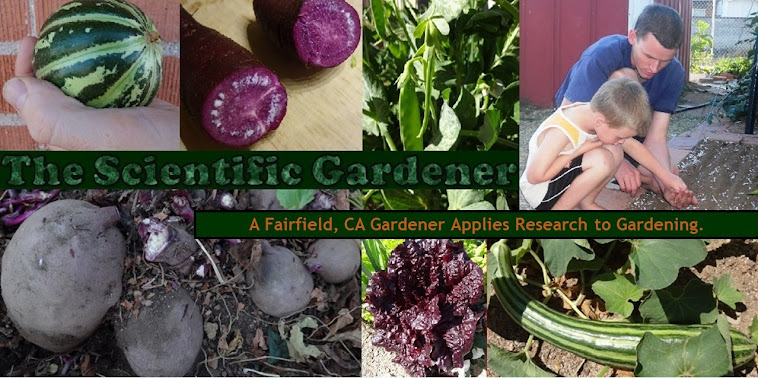| 2009 Tomato Transplants - Notice the Clipboard. |
Which is better – direct seeding or transplanting? Direct seeding of course. Some say that direct seeding is the only way to enable a plant to reach its full potential by preserving an undisturbed taproot. Additionally, some farmers assert that direct seeded plants resist frost better and produce an earlier or larger crop than transplants do. My viewpoint is that direct seeding is the preferred method for growing some plants. Direct seeding is the way to go if you are dealing with the curcubit family. Squash, cucumbers, and melons do very well direct seeded and have difficulty with being transplanted after about a week of growth. Often the roots go into shock and take several weeks to recover, if at all. If peat pots are used and the transplant’s roots are handled very gently the plant may recover and grow again. Otherwise it may be more beneficial to use a hot cap to get a head start on cucubit seedlings. Beans, peas, and carrots also do well being direct seeded because of issues involved with their roots.
Another school of thought is that transplanting is beneficial because it allows you to get a head-start on the garden. This is especially true for tomatoes, peppers, onions, and brassicas such as cabbage, broccoli, and cauliflower. These plants often take a long time to mature and do not go through shock if transplanted correctly. I have been growing tomatoes from seeds for a while because that way I can control what varieties of tomatoes I grow. If pests are a problem direct seeding can help you get plants off to a good start before they would have a chance to munch on your little seedlings. Growing from transplants can reduce the time between crop harvest and a new crop. This can increase overall productivity given the ground is still fertile and disease-free. Both of these problems can be aided by the practice of effective crop rotation. Though transplanting may appeal to gardeners who prefer to have attractive and productive garden beds it can be expensive to always buy starts and can lead to potentially unsustainable gardening practices.
| Tomato in 2" soil block with deep dowel hole |

No comments:
Post a Comment
Dear Gardening Friends,
I look forward to learning more about gardening with you. Your comments help me recognize that gardening is a life-long journey.
To advertisers: Note that this blog is concerned with gardening and gardening techniques. Please do not attempt to advertise here by leaving a comment. Depending upon how egregious the comment is, it may be deleted.